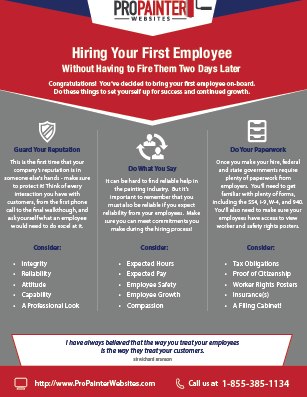Discover The Ways In Which Seasonal Factors Can Impact The Success Of Commercial Outside Paint And Identify The Best Times To Achieve Long-Term Results For Your Project
Discover The Ways In Which Seasonal Factors Can Impact The Success Of Commercial Outside Paint And Identify The Best Times To Achieve Long-Term Results For Your Project
Blog Article
Learn Even more By-Korsholm Skafte
When you're intending an industrial exterior painting job, seasonal aspects can make or damage your outcomes. You'll intend to think about exactly how temperature level and moisture influence paint application and drying times. Choosing the right season can guarantee your paint sticks properly and lasts much longer. However which exterior painters are truly the best for this kind of work? Let's check out the crucial elements that can impact your task's success.
The Influence of Temperature Level on Paint Application
When you're intending an industrial external paint task, the temperature level can substantially affect just how well the paint adheres and dries out.
Preferably, you wish to paint when temperatures vary between 50 ° F and 85 ° F. If it's too cold, the paint may not treat properly, leading to problems like peeling off or cracking.
On the other hand, if it's as well warm, the paint can dry too rapidly, stopping proper attachment and leading to an irregular finish.
You must likewise think about the time of day; early morning or late afternoon supplies cooler temperatures, which can be a lot more beneficial.
Always examine the maker's referrals for the details paint you're utilizing, as they commonly provide support on the ideal temperature range for optimum outcomes.
Humidity and Its Impact on Drying Times
Temperature isn't the only environmental variable that affects your business external paint task; humidity plays a considerable function too. High humidity degrees can slow down drying times considerably, affecting the overall top quality of your paint job.
When the air is filled with moisture, the paint takes longer to cure, which can lead to problems like inadequate bond and a higher threat of mildew growth. If you're repainting on an especially moist day, be gotten ready for prolonged wait times between layers.
It's essential to check neighborhood climate condition and plan accordingly. Ideally, go for moisture degrees between 40% and 70% for ideal drying.
Keeping these factors in mind guarantees your job stays on track and provides an enduring surface.
Best Seasons for Commercial Outside Paint Projects
What's the very best time of year for your industrial outside painting tasks?
Springtime and very early loss are generally your best bets. During these periods, temperatures are moderate, and moisture levels are usually lower, developing ideal problems for paint application and drying.
Stay clear of summer season's intense heat, which can create paint to dry too promptly, bring about bad adhesion and finish. In a similar way, winter months's chilly temperature levels can impede appropriate drying out and curing, taking the chance of the long life of your paint task.
Go for days with temperature levels between 50 ° F and 85 ° F for ideal outcomes. Bear in mind to inspect the local weather prediction for rain, as wet problems can wreck your job.
Planning around these factors guarantees your paint job runs smoothly and lasts much longer.
Final thought
To conclude, preparing your commercial external paint tasks around seasonal factors to consider can make a substantial distinction in the end result. By organizing job during the ideal temperature levels and humidity levels, you'll make certain better bond and drying out times. Remember to keep an eye on regional weather forecasts and choose the correct time of year-- springtime and very early loss are your best bets. Taking these actions will certainly help you achieve a resilient and professional coating that lasts.
